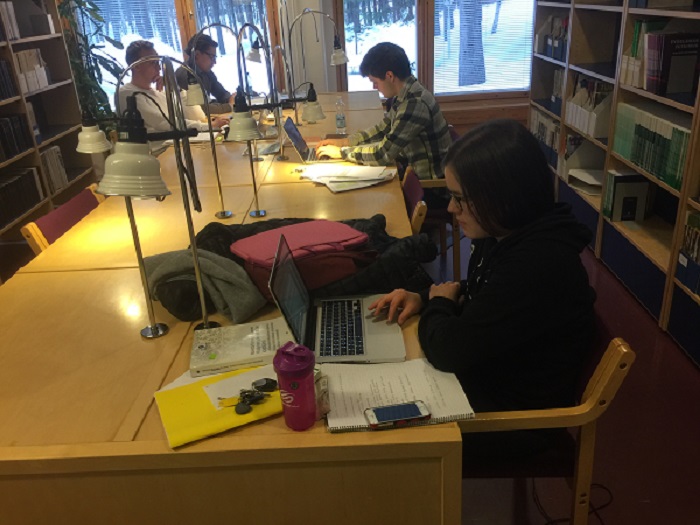Number of university degrees slips 3% in 2016
Published : 11 May 2017, 00:57
Updated : 11 May 2017, 11:01
A total of 31,900 students at the country’s universities received degrees on completion of their study programme in 2016. The number is 800 fewer than that in the previous year, according to Statistics Finland’s Education data.
The number of lower university degrees slid the most, by five per cent from the year before, while the number of higher degrees conferred by the universities slipped only a little, by under one per cent. However the number of doctoral and licentiate degrees completed remained unchanged from the year before.
In all, 14,400 lower university degrees, 15,400 higher university degrees, 120 licentiate degrees, and 1,900 doctoral degrees were completed last year. Fifty-seven per cent of those who completed a degree in 2016 were women. Nearly seven per cent of the degrees were attained by foreign students, who accounted for 10 per cent of the higher university degrees and 23 per cent of the all doctoral degrees.
According to the new national classification of education (2016), most degrees in 2016 were completed in arts and humanities, accounting for 17 per cent of all the university degrees. Nearly as many, 16 per cent, degrees were completed in the fields of business, administration and law, and technology. Most of the doctoral degrees, around 1,050, were completed last year in the fields of health and welfare, natural sciences and technology, with about 350 doctors graduating from each field.
Reviewing the performance by the universities, the highest number of 6,000 degrees was conferred last year by the University of Helsinki, with the Aalto University coming in second with 4,200 degrees and the University of Turku stood in the third place with 3,500 degrees.
In 2016, a total of 25,600 freshmen enrolled in the universities, showing a fall of 300 in the number of university admissions in 2015. The number of graduate and post-graduate students, however, marked a seven per cent rise from 2015 to 2016. The number of new students studying for lower university degrees went down by four per cent and the number of new doctoral programme students decreased by three per cent in 2016. In all, 16,600 students started studying for a lower university degree and 7,300 for a higher university degree. Nearly 1,700 students started studies for a doctorate degree.
In 2016, a total 154,700 students were studying at universities, which is two per cent lower than that in the previous year. In all, 81,300 students were studying for a lower university degree and 54,400 for a higher university degree. There were 18,900 post-graduate students, of which around 1,050 were studying for licentiate degrees and nearly 17,800 for doctorates.
In 2016, the highest numbers of students were studying in the field of arts and humanities – 18 per cent. The second most students were studying business, administration and law – 15 per cent. Nearly as many students, 14 per cent, were studying in the field of technology. The proportion of women of all students attending education leading to a degree was 53 per cent but the variation was large when viewed by field of education. In education a good four out of every five students were women, in arts and humanities and in social sciences two-thirds of the students were women. Studies in health and welfare, and agriculture and forestry were also female-dominated, accounting for two-thirds of the total students in those disciplines. Women’s share was the smallest in the field of information and communication technologies (ICT), only one-fifth of the students.
The number of students was highest at the University of Helsinki, 32,000. The second highest number of students were at the Aalto University, 17,600, and the third most at the University of Turku, 16,100.


